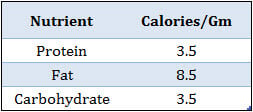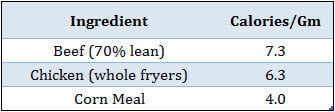Some insist corn is a nutritious dog food ingredient… while others denounce it as nothing more than a problematic cereal grain.
So, what should you believe? What’s thetruth about corn in dog food?
Is it good? Or is it bad?
Well, that depends on whom you ask.
In general, anxieties expressed over the use of corn in dog food seem to come from consumers… pet owners, breeders and the like.
Whereas the “Corn is Great” crowd appears to include those who have something to gain from making or selling products made with this controversial grain.
Myths About Corn Promoted
by the Pet Food Industry
Makers and sellers of corn-based foods insist the negative stories about corn are simply unsubstantiated myths and rumors spread around the Internet by simple-minded consumers.
The truth is, the pet food industry itself is guilty of disseminating its own self-serving and myth-based distortions, too.
In fact, most of the exaggerated claims extolling the virtues of corn actually originate within the pet food industry and are unwittingly propagated by naive and well-meaning pet owners.
Here are some of the most enduring myths about corn promoted by makers and sellers of corn-based dog foods.
Myth #1Corn Has a Low Glycemic Index
The glycemic index is a way of measuring the tendency of a specific food to raise the blood sugar level of an animal. The higher the index, the greater the risk of an unhealthy rise in blood sugar.
Here are the actual glycemic index figures for a few common dog food grains…
- Corn meal (69)
- Brown rice (55)
- Corn (53)
- Oatmeal (49)
- Wheat (41)
- Barley (25)
Compared to most other cereal grains used for making dog food, corn does not have a low glycemic index.
Myth #2 Corn Does Not Cause Allergies
Cheerleaders for corn-based products like to point out that corn is one of the least allergenic ingredients in dog food.
And according to some studies, that is probably true. One report found the incidence of corn allergy to be only 14%.And another places corn at just 3% of all allergies.
Yet to be fair, other reports caution readers not to place excessive value on the accuracy of these studies due to the notable difficulty in confirming the precise incidence of food allergies in dogs.
In any case, although it may not be a common food allergen, corn still cannot be completely excused as a potential cause.
When searching the Internet for these studies, it’s hard not to notice the thousands of legitimate reports by owners, breeders, forums and veterinary sites reporting corn and other cereal grains as a likely cause of their dogs’ allergies.
And then there’s the (very real) issue of cereal grain quality.
In many cases, problems aren’t so much a matter of allergies to the corn itself but rather to undetected contaminants within that grain.
It’s not unusual to find storage mites, their droppings and expired carcasses in bulk lots of feed grains6. And all of these are known to be notable canine allergens.
So, for these reasons (and until proven otherwise), we believe corn should still be considered a reasonable suspect when investigating the cause of any food-related canine allergy.
Myth #3 Corn Is Highly Digestible
As a whole grain, corn is not easily digestible. Unless the kernel is first refined into a meal or a flour (and then cooked), corn can be very difficult for a dog to digest.
As a matter of fact, corn (and other grains) are only digestible to the extent to which they’re processed.
That’s why even though the grain may be listed as “whole” on a pet food label, it’s nearly always first ground before being cooked into kibble.
And the finer it’s ground, the more digestible corn will be. But also, the higher its glycemic index.
However, to the uninformed, the pet food industry’s claim that corn is “99% digestible” can be misleading. It’s easy to innocently take that statement to mean corn has a high nutritional value, too.
Unfortunately, as you’ll see, that is simply not the case.
Myth #4 Corn Has a High Biological Value
There’s nothing unique enough about corn’s content that makes it a nutritional standout… nothing that can’t be found in, or converted from, some other ingredient. Not even protein.
And to those who insist the protein content of a corn kernel has some important biological value we present the following table…



